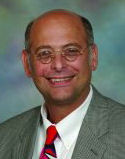Life is sweet: An extremely brief history of diabetes
One thousand years before Hippocrates, healers knew that the passing of too much urine was a bad sign.
A 25-year-old man presents with polyuria and weight loss. A friend, who is diabetic, has already checked the patient's fingerstick and found it to be >500. Is this modern medicine? To be sure, the use of the fingerstick is. But the patient could just as easily have been presenting to an Egyptian physician in 1600 BCE.
One thousand years before Hippocrates, in the time that the Papyrus Ebers was written, healers knew that the passing of too much urine was a bad sign. One popular treatment—eating khat, grapes, honey, berries, and sweet beer—was unlikely to have cured the patient, however.

It fell to Aretaeus the Cappadocian, a first-century Greek physician, to name the disease “dia-bainen,” based on a combination of “to go through” and “siphon.” Specifically, he described it as “an affliction…being a melting down of the flesh and limbs into urine.”
In the middle ages, the alchemist-physician known as Paracelsus (you'd change your name too if it was Theophrastus Bombastus von Hohenheim) chronicled the disease, noting swollen feet, too much urine, and a rapid pulse. He suggested treating with mercury vapor. After all, he was an alchemist.
Though it was known that diabetic urine attracted ants, it was not until 1770 that Matthew Dobson showed that the sweetish taste of the urine (yum) was in fact produced by sugar.
Working in Strasbourg in the 1890s, Joseph von Mering and Oskar Minkowski—with matching pince-nez glasses and beards—induced diabetes by removing the pancreas of a dog. Just ten years later, Eugene Opie at Johns Hopkins University identified the islets of Langerhans as the seat of the problem. (Paul Langerhans had identified these cells in 1869, but had no idea what they did.) Another decade later, in 1910, Sir Edward Albert Sharpey-Schafer hypothesized that a single chemical element was missing in diabetics, and coined the term “insulin.”
The scene then shifted from Europe to Toronto. Working in Professor John MacLeod's lab, junior researcher Frederick Banting and medical student Charles Best gave an extract of pancreatic tissue to dogs with surgically induced diabetes. They ligated the pancreatic duct, then waited 7 to 10 weeks. Injection of the extract, which they first called “isletin,” lowered a test animal's glucose level. (They found rectal installation to be ineffective, by the way, and not much fun for the dog or the installer.) Pancreatic juice could deactivate isletin, they found. With the help of Bertram Collip, who had already purified epinephrine and worked in the same lab, they were able to purify insulin. The fight for credit for this discovery—and the Nobel Prize—is a whole other story.
The first patient treated was Leonard Thompson, a 14-year-old. Weighing only 65 pounds, he presented with lethargy and weight loss to the Toronto General Hospital. His glucose was >500, despite intensive dieting. On Jan. 11, 1922, he received the purified extract, and lived an unprecedented 13 more years, until he died of pneumonia.
In 1920, Danish researcher August Krogh won the Nobel Prize for his work on capillaries and gas exchange. His wife, Marie, was one of the first female physicians in Denmark. When she was diagnosed with diabetes in the early 1920s, they traveled to Canada to see what was going on with insulin.
The shortcomings of insulin were noted, specifically its short half-life, so Krogh's colleague, Hans Christian Hagedorn, went to work. A failed attempt to mix insulin with epinephrine was followed by mixing it with protamine (derived from salmon sperm), with the PH neutralized. NPH insulin was born (neutral protamine Hagedorn insulin, that is).
Meanwhile, in France, Monet was painting lilacs. He was not diabetic, and not involved in this story at all, but lilacs are. The French lilac was of interest in the search for an oral treatment for diabetes. Also called the less alluring “goat's rue,” this folk remedy was known to be active in the treatment of diabetes. Dr. Minkowski began to search for the active substance in this plant, which he called “synthalin.” Unfortunately, it was quite toxic.
Sixteen years later (1942), in Montpellier France, an epidemic of typhoid was being treated with sulfonamide, a new antibiotic. Patients who took it all became hypoglycemic. Testing on dogs showed that the drug had no hypoglycemic effect if the pancreas was removed. This substance seemed to stimulate the secretion of insulin; thus, the sulfonylurea was born. The first few iterations were toxic or had too long half-lives, but safer, short-acting forms were soon developed.
In the years to come, a variety of substances would be tested. A trial of a drug used during an influenza outbreak lead to metformin (given the brand name Glucophage, or “sugar-eater”). Even better, Gila monster venom yielded a new class, the incretins.
So, a 25-year-old man presents with polyuria. His flesh is melting and his urine is attracting ants. We can turn to the glucometer (developed in 1968) to make our diagnosis. We might treat our patient with inhaled mercury, or better yet, goat's rue, Gila monster venom, or extract of dog pancreas.



